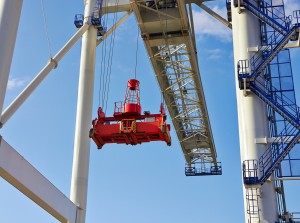Government Report Suggests Cameras on Cranes
A government report from New Jersey suggest that, “Employers should consider installing devices that increase the visibility of the crane operator.” This comes as advice for those who work in job sits where huge cranes are required to lift very heavy loads. Often, in such cases, the crane operator cannot see the load, or the place where the load is to be placed. He has to rely solely on communication with riggers and workers that are often several hundred feet below him on the ground. With a mixture of hand signals and radio communication, it can sometimes be a dangerous situation for everyone involved.
For example, according to the above named report, a forty-four year old rigger was killed when a mobile gantry crane ran over him at a concrete plant. He had been working at the plant for three years as a spotter or rigger for the huge crane. This crane moved concrete slabs across the plant. According to the report, “The crane was a box-like assembly of steel I-beams riding on four 62-inch-high rubber tires. With a lifting capacity of 100,000 pounds, the 30-foot-high, 45-foot-wide diesel- powered crane was operated by a worker in an elevated cab. The victim was walking ahead to spot for obstacles as the crane straddled a large concrete slab which blocked the operator’s view. A second spotter saw the victim on the ground after he had been run over by the right front wheel of the crane. The victim was airlifted and admitted to a regional trauma center where he died 15 days later of complications related to his injury.”
- Employers should consider installing devices that increase the visibility of the crane operator.
- Employers should conduct a job hazard analysis of all work activities with the participation of the workers.
- Employers should ensure that all machine guards are in place before operating equipment.
HoistCam’s cameras on cranes were created for just such a situation. They can be placed anywhere on the crane r job sight to give the crane operator full site of any lift, and to ensure that he can see exactly where the workers are location in relation to the crane. Cameras on cranes are becoming recognized as a safety measure which can not only saved million of dollars by protecting equipment and machinery, but can also save lives.


